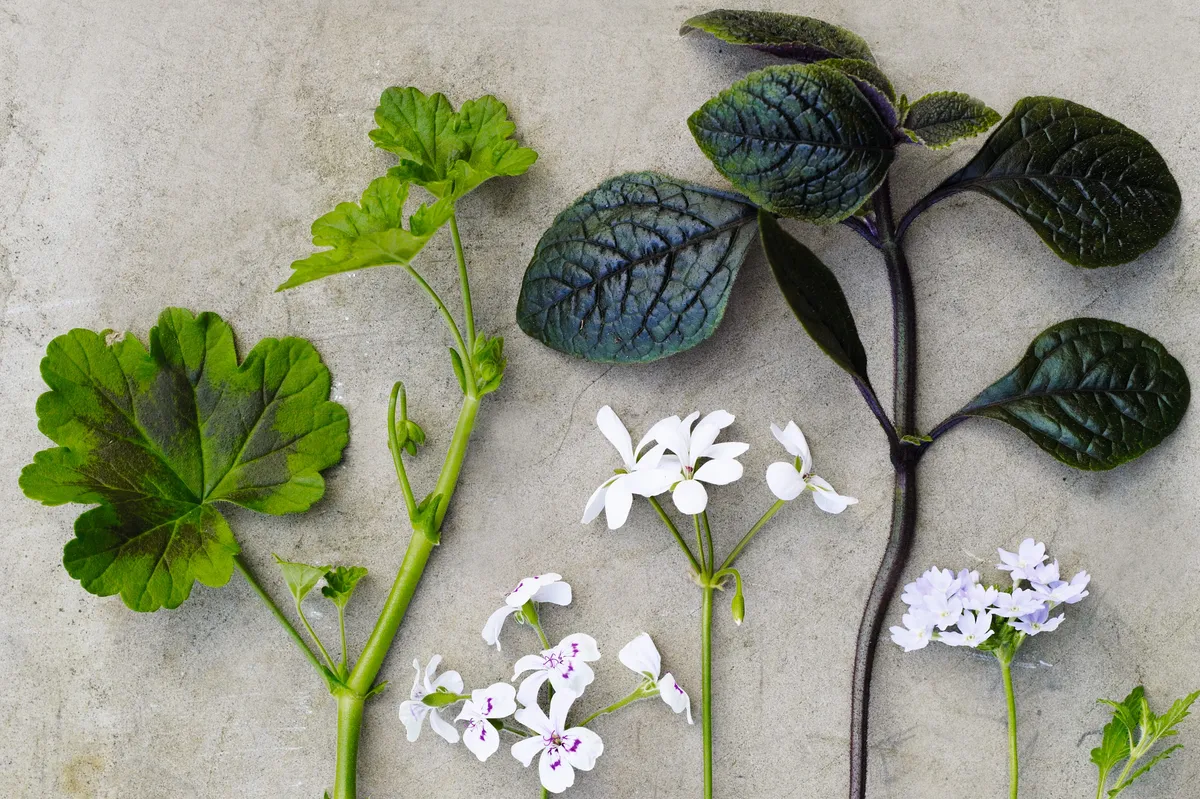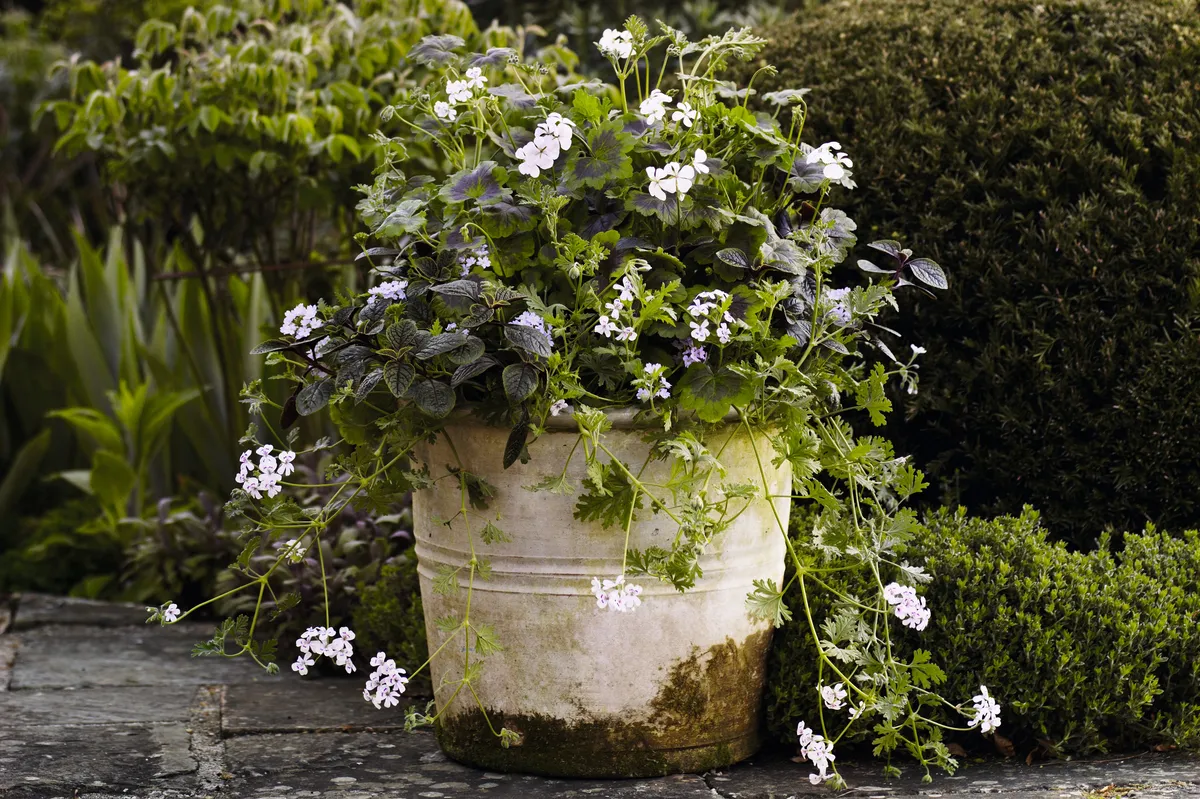Colours and shapes
I fell in love with Pelargonium ‘White Boar’ when I spotted it outside the front door of a Cotswolds vicarage. To complement the dark-patterned foliage, I combine it with Plectranthus ciliatus, pinching out the tips of the shoots regularly to prevent it from flowering. Pelargonium ‘Blandifordianum’, helps to link the colour of the planting with the pot. Glandularia Aztec Silver Magic (= ‘Balazsilma’) provides more depth with its dark-green, divided leaves, and the flowers provide additional interest in shape and colour.
You may also like
- Planting ideas for summer containers
- Late summer planting ideas for pots
- The best container displays for your garden
Plants

From left to right
Pelargonium ‘Blandifordianum’ Very often trailing, this pelargonium is easy to weave through other plants. Grey, deep-cut leaves add interest to any scheme and the flower markings are just divine. April – September. 90cm. USDA 9a-11 (hardiness rating).
Pelargonium ‘White Boar’ With simple, pure-white flowers, this plant withstands rain well and is free flowering. April – October. 40cm.
Plectranthus ciliatus Maroon-purple leaves with lilac-pink flowers. Sun and semi-shade. June – September. 60cm. USDA 10a-11.
Glandularia Aztec Silver Magic (= ‘Balazsilma’) Lush, dark-green leaves and lavender-coloured flowers all summer. Keep deadheading. May – October. 30cm. AGM*. USDA 10a-11.
*AGM = Award of Garden Merit from the RHS
Container, cultivation and care

The old terracotta pot was whitewashed with greenhouse shading paint and after one season was colonised by algae and moss. The container will spend the summer on the terrace, with a lot of sun and attention. A layer of crocks provides good drainage and an equal mixture of John Innes No. 2 and a high-quality, multi-purpose compost will give it a good start.

Deadheading is essential and I feed all containers weekly with a balanced liquid fertiliser to make sure plants flower well into the autumn. I also weave shoots through the display to ensure balanced development. Some staking may be necessary, especially in an exposed position. There is always a plant that wants to take over and one that is happy to retreat, but by the end of summer this should be an interesting display.